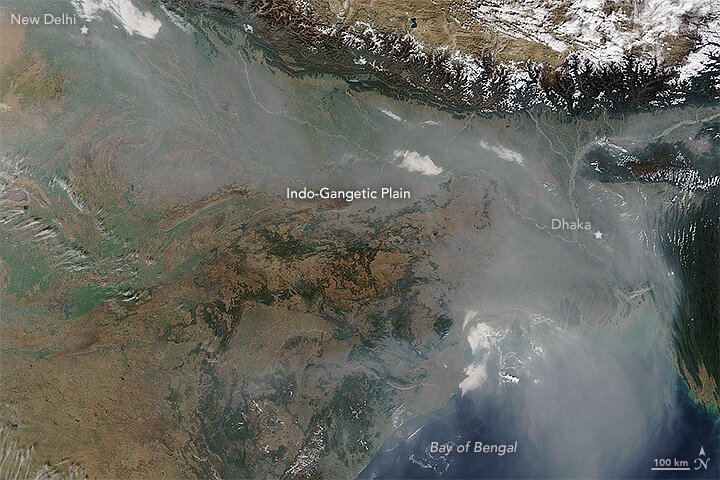Researchers from Washington University in St. Louis has shed light on the main contributors to high levels of fine particulate matter (PM2.5) in South Asia. The study, published in Environmental Science & Technology, analyzed the emissions from various sectors and fuels in 29 states in India and six neighboring countries. The findings revealed that primary organic particles, emitted directly into the atmosphere from different sources, are the primary drivers of PM2.5 concentrations in the region.
The research indicated that residential combustion, industrial activities, and power generation were responsible for over 1 million deaths in South Asia in 2019 due to ambient PM2.5. The study highlighted that solid biofuel was the leading combustible fuel contributing to PM2.5-related mortality, followed by coal and oil and gas.
Air pollution, both indoors and outdoors, was identified as the leading risk factor for death in South Asia. Understanding the major sources of PM2.5 is crucial for effectively managing this serious problem. The study emphasized the need for interventions and policies to address the issue throughout the region.
The researchers employed advanced modeling techniques, combining global emission inventories, satellite data, and state-of-the-art simulations, to assess the sources of PM2.5 and associated mortality rates. They found significant contributions from burning biofuel and coal, with coal being particularly prevalent in central and eastern India. Additionally, higher household air pollution was observed in north-east and central India, while biofuel and open fires were significant contributors in Bangladesh and Myanmar, respectively.
The study concluded that the air pollution problem in South Asia extends beyond urban areas, emphasizing the need for comprehensive policies to mitigate national-level PM2.5 exposure. The researchers proposed several strategies for future interventions, including promoting the replacement of traditional fuel sources with sustainable energy alternatives.
The authors of the study hope that the detailed sector- and fuel-specific information provided in their research will assist local policymakers in developing targeted approaches to eliminate PM2.5 sources in their respective regions. They also highlighted the effectiveness of past policies in India and expressed optimism about the potential for further progress in combating air pollution and reducing associated health risks.
Source: Washington University in St. Louis
